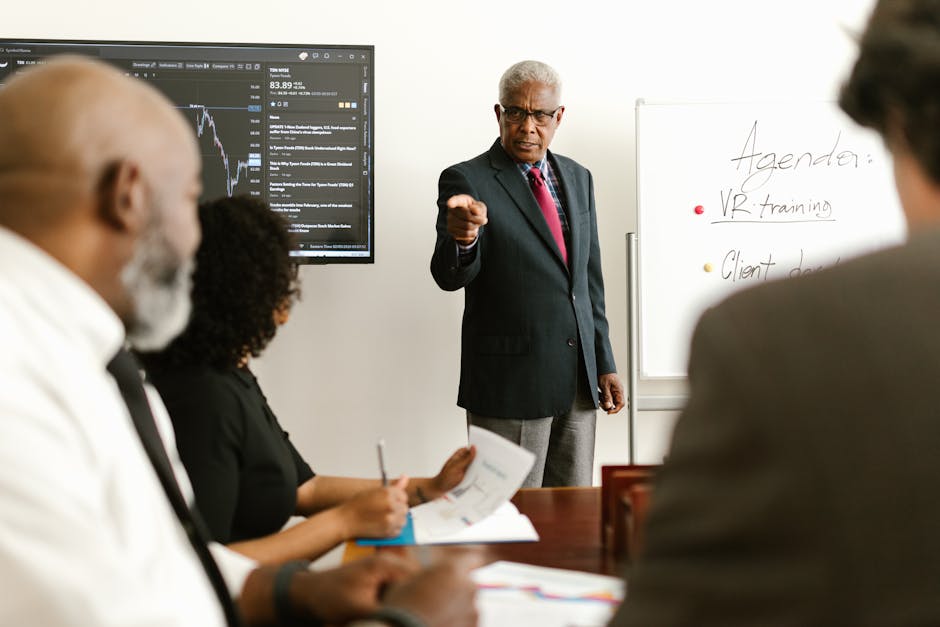Of course, the board meetings are very vital in making decisions for the organization and in plotting the future. The minutes of the meetings, therefore, have to be accurate and detailed so they can show the arrival of decisions, the actions that are to be carried out, and what was discussed during the meeting. This is of great importance in knowing later what transpired in the board meeting. Now the documentation will have to be proper so that there will not be any confusion and the members are allowed to look into the minutes for clarity and accountability. Here and now, we are going to look at tips in taking board meeting minutes and how to get them accurate and useful for everyone.
Pre-Meeting Preparation
The actual meeting is always preceded by good knowledge of the agenda of the said meeting. Clear picture would emerge of the topics to be discussed and thus convenience would be the result in preparing for the key points that must be covered in the minutes, through the agenda. It also helps in relating context to the matters being discussed, which in turn renders creation of minutes an easier task.
Tools and Templates
Again, the right tools and templates can vastly make minute creation much easier. With today’s great advancements in technology, most organizations are slowly going paperless during their board meetings https://boardroommind.com/paperless-board-meetings/ it makes everything so much more efficient and accessible. Now there are so many different software and digital tools out there that offer free board meeting minutes templates, which ensure straightness with minimum time consumption assign a Minute-Taker
The first line is to make the appoint one to take minutes. The appointed person should be a good listener, with the ability to summarize discussions well. He or she needs to understand that role, therefore be ready to forgo contributing to discussions in order to concentrate on taking the minutes.
In the Meeting Itself
It means that when taking minutes, one does not write word for word, but rather puts down the points the speaker wants to bring out. Summarize what has been discussed and underline the key ideas. It makes the minutes not only concise but easy to read after some time.
Decisions/Actions Captured
Recording every decision made and action agreed upon is one of the most vital facets of meeting minutes. Ensure that every decision is clearly documented as agreed upon by whom, by whom, and deadlines. This aids in tracking progress and accountability.
Maintain Objectivity
While recording minutes, one has to be objective. Do not add your perception or interpretation. Minutes have to show what all exactly occurred or what all actually happened in the meeting, without any bias and prejudice.
Post-Meeting Activities
Once written, take sometime to review and edit the minutes. Check for any error or omission and to ensure minutes are clear and comprehensive. A Good Idea is to get someone else to review minutes who can catch mistakes that you may have gone over.
Distribute the Minutes
Once approved, those minutes should reach all board members in the shortest time possible. The timelier your distribution, the more likely it is that people will remember what they read since everything is still fresh in their minds. It also offers the opportunity for easier follow-up on any action item.
Store Minutes Securely
Finally, ensure that the minutes are kept secure. This may take the form of a digital format backed up properly or a physical format stored in a secure physical environment. Proper storage ensures that the integrity of the minutes and their secrecy, if necessary, are maintained.
Best Practice for Effective Minutes
- Use Clear and Concise Language. The words used in the minutes should be simple and clear. Professional terminology or lengthy sentences must not be used, which tends to confuse readers. The minutes should go easy on the reader’s eye, where reading must be a pleasure for them.
- Uniformity of format gives a professional touch to the minutes. The same format should be used for various meetings with similar headings, bullet points, and numbering. This will provide consistency and help access the desired information without any hitch.
- Regular training given to minute-takers can make big differences in the quality of minutes. Some of the topics covered may deal with best practice, new tools, or templates along with any additional requirements organization-specific. Better-trained minute-takers are sure to create minutes that are accurate and effective at minute-taking.
Summing up
Consequently, the taking of effective board meeting minutes is very critical and must be done in a way that depicts preparation, attention to detail, and consistency. The tips above will guide you in ensuring that your meeting minutes are accurate, concise, and, more importantly, worthy for all members. Best practices and the right tools will help you toward that goal-so your board meetings will be much more productive and organized.

